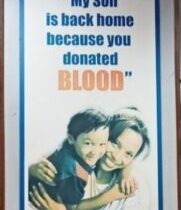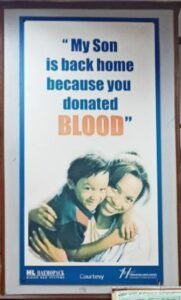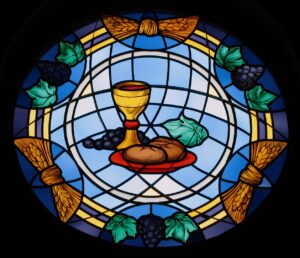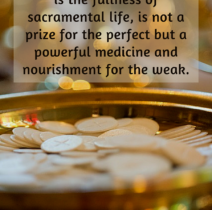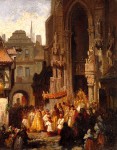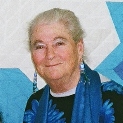Bread and Wine – Sacrifice to the Lord
 Bread. Wine. Two ancient foods that nourish and bring pleasure, even joy, to millions of people today and untold millions of millions of people through the ages. Before the days when humans first domesticated animals and raised them for a source of food, they dried and ground plants, mixed in some liquid, heated the mixture on stones by a fire, and ate their bread.
Bread. Wine. Two ancient foods that nourish and bring pleasure, even joy, to millions of people today and untold millions of millions of people through the ages. Before the days when humans first domesticated animals and raised them for a source of food, they dried and ground plants, mixed in some liquid, heated the mixture on stones by a fire, and ate their bread.
Bread is one of the most important foods ever developed by humans. It comes in many flavors, shapes, and colors. It is made of many different grains, though wheat is the most commonly used. Some breads are leavened, others are not. Methods used to make the bread rise (leavened bread) are varied. Some use naturally occurring yeast, others use manufactured yeast. Some use chemicals such as soda or baking powder. Others use steam or forcing bubbles into the dough.
All are recognized as critical elements in the of food, of nutrition for life and growth, for humanity.
It is striking as we celebrate the Feast of the Body and Blood of Christ, that bread and wine are the elements associated with this gift of himself given to us by Jesus at the Last Supper.
Often, we think of Jesus as the Lamb of God. And in terms of the tradition of sacrificing young animals to a deity, this makes sense. After all, in our foundational stories we hear of animals being sacrificed. Abel’s sacrifice of a lamb was accepted, while Cain’s sacrifice of first fruits was not. It wasn’t, of course, because the farmer’s gifts were less valued, just that he hadn’t given the best of the crop. But that’s another story for another time.
For a pastoral people, the sacrifice of animals was the most common way to honor and seek the favor of their God. It’s noteworthy, therefore, that even before the establishment of the Covenant between God and Abram, in which his name was changed to Abraham, we hear of the thanksgiving sacrifice of Melchizedek.
Melchizedek was a king at Salem (Peace), a place later known as Jerusalem. Abram and his men joined the forces of Melchizedek in defeating the invading armies of five other kings, and rescuing his brother Lot, whom they had captured. (Gen 14:1-17)
After this successful campaign, Melchizedek, who was also a priest, offered a sacrifice of bread and wine in thanksgiving and blessed Abram. (Gen 14:18-20)
Bread and lamb were part of the Passover meal, celebrated at the time of the Exodus and annually after that. Wine was used by all for drinking. Water alone was not safe – too much danger of bacterial contamination. So wine was mixed into water (or vice versa), making it safe to drink.
After the Resurrection, St. Paul enlarges our picture of the importance of bread and wine, with his first letter to the Corinthians. We often think of the Gospels as the first stories of Jesus’ life, but Paul’s letters came earlier. In this letter, he writes of what he has heard from the eyewitnesses present at Jesus’ last meal, his disciples.
I received from the Lord what I also handed on to you, that the Lord Jesus … took bread, and … broke it and said, “This is my body that is for you. Do this in remembrance of me…This cup is the new covenant in my blood. Do this, as often as you drink it, in remembrance of me.” (1 Cor 11:23-26)
Whenever we come together in prayer, remembering as we break and share the bread, He is present and giving himself to us, to nourish our lives of faith and discipleship – the bread of life. We do the same with the wine we share – his life’s blood poured out for all, to share divine life with all.
From the very beginning, we as a community have shared the meal. When we do it, we enter a different dimension or realm of reality. We don’t always notice. We’re used to it. But visitors from other cultures or faith traditions notice something different, something special when we really enter into our liturgy of thanksgiving.
An early taste of the great generosity of God can be glimpsed in the experience of the very large crowd who went out into an arid countryside to hear Jesus’ words. John tells us the crowd numbered five thousand men – that didn’t include women and children! Even today, that would be an amazingly large crowd.
Evening was approaching. People were going to need to eat. Practical folks would send them home or to the nearest town to get food. That’s what the disciples recommended. But Jesus never claimed to be practical. He trusted the Father would provide.
“Have the people sit down in groups of about fifty.” This done, he took the food offered – five loaves and two fish, blessed them, and started breaking off pieces to share them with those gathered. Before long, everyone had eaten their fill. More surprising – there were 12 basketfuls left over! (Lk 9:11b-17)
How it all happened doesn’t really matter, though often that is the first thing we wonder. What really matters is to notice the overwhelming abundance and generosity poured out to and through all gathered in that arid place – enough for all to share and celebrate.
We celebrate the great gift of sharing in the life of God, eating the bread of life, drinking the lifeblood become wine for all to share.
Bread. Wine. Ancient gifts – still bring life today.
How do we respond? How do we take our experience of Eucharist into our daily lives? Do we welcome people from other lands, other communities, other beliefs and traditions? Do we share food, clothing, healthcare, education, opportunities for a better life?
This is our call. As disciples of the Lord, sharers in the life of the Lord, may we open our hearts this week and do our share of the work of bringing the kingdom to birth!
Bread and wine – life to share.
Readings for the Solemnity of the Most Holy Body and Blood of Christ
Read More




